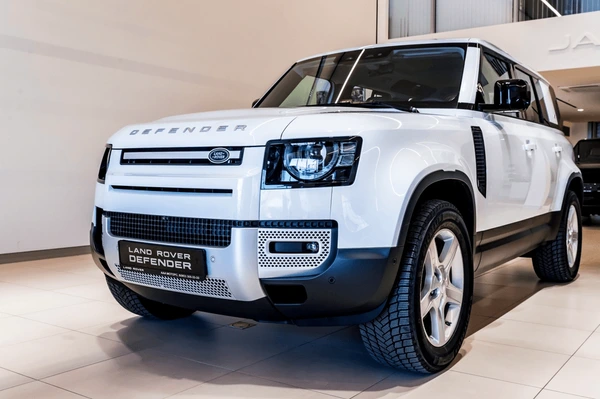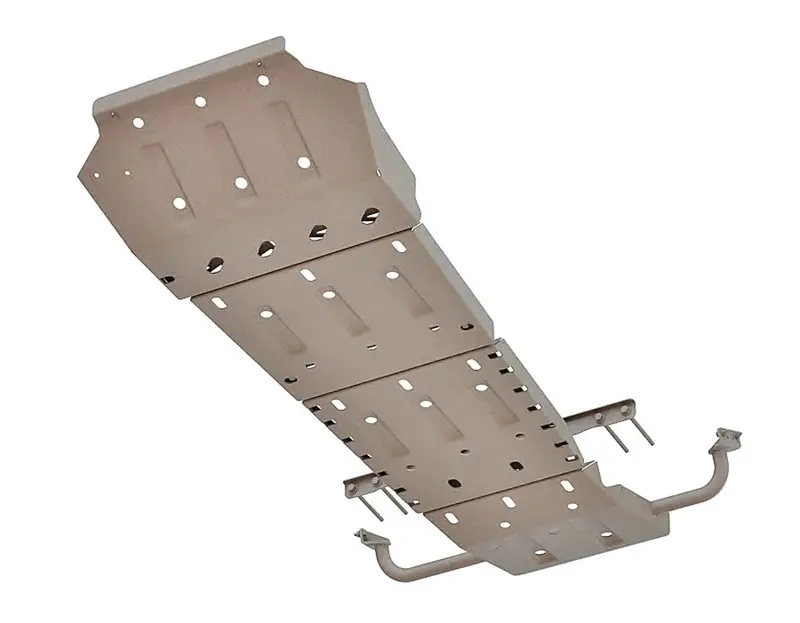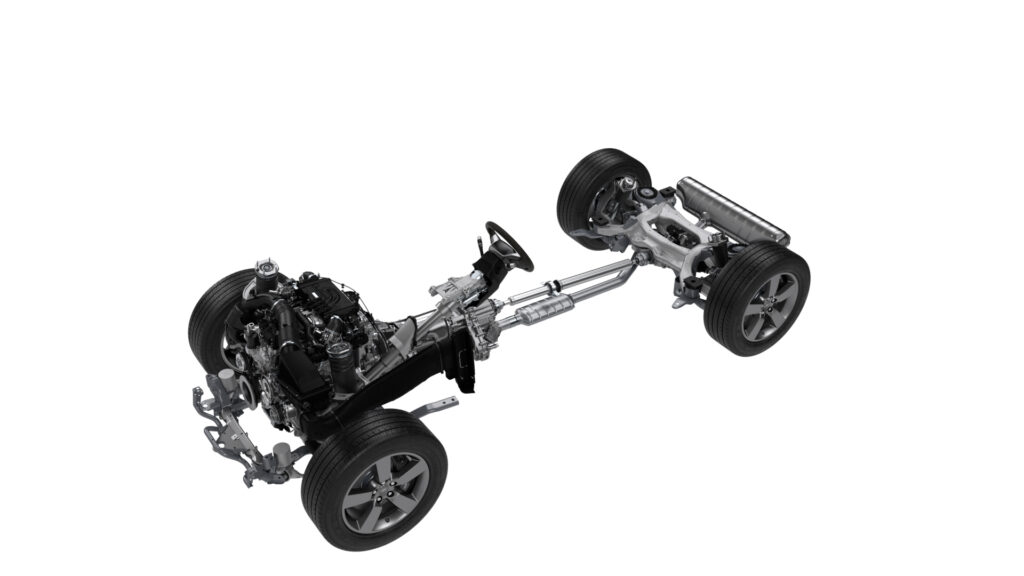For the die-hard off-road enthusiast, owning a Defender isn’t just about driving—it’s about conquering terrain that most vehicles wouldn’t dare to traverse. But with great off-road capability comes the need for diligent maintenance to keep your Defender running smoothly through every mud pit, rock crawl, and dune. Here are some essential maintenance tips tailored specifically for off-road adventures.
| Defender Maintenance Tips for Off-Road Enthusiasts | Content |
|---|---|
| Tires | Invest in off-road tires with aggressive tread patterns, reinforced sidewalls, and a full-size spare. Air down for loose surfaces and re-air for pavement. |
| Suspension | Upgrade to gas-charged shocks and springs. Consider a 2-3 inch lift for increased ground clearance. |
| Undercarriage Protection | Install skid plates made of aluminum or UHMW plastic to protect the engine oil pan, transmission, transfer case, and fuel tank. |
| Drivetrain | Service the 4×4 system regularly and consider upgrading to locking differentials or stronger internals for extreme rock crawling. |
| Exterior Protection | Install rocker guards, rock sliders, and bumpers with tow hooks, D-ring mounts, and winch plates. |
| Recovery Gear | Carry traction boards, recovery boards, tow straps, snatch blocks, and a hi-lift jack. Invest in a winch with a rated pull capacity of at least 1.5 times your vehicle’s weight. |
| Lighting | Upgrade to auxiliary LED light bars for improved night visibility on trails. |
| Electrical | Upgrade electrical system to power winches, air compressors, and auxiliary lights. |
| Maintenance | Change engine oil more frequently using high-quality synthetic oil, inspect drivetrain components regularly, and upgrade to heavy-duty brake pads and rotors. |
| Common Off-Road Problems | Underbody damage, air suspension issues, electronic gremlins, tire damage, overheating, intake/dust intrusion, and limited articulation. |
| Overall Preparation | Research the terrain, get the right recovery gear, and enhance your off-roading skills. |
Tires:

Your tires are your first line of defense against rough terrain. Invest in dedicated off-road tires with aggressive tread patterns like the BF Goodrich All-Terrain T/A KO2, Goodyear Wrangler DuraTrac, or Nitto Trail Grappler. These tires are designed to grip mud, rocks, sand, and everything in between.
Ensure your tires have reinforced sidewalls, preferably with “3-ply” sidewall reinforcement, to resist cuts and punctures from sharp rocks. Carry a full-size matching spare tire that’s properly inflated and in good condition—don’t rely on a temporary spare for off-road use.
Airing down your tires to around 15-20 psi can significantly improve traction on loose surfaces by increasing the tire’s footprint and tread flexibility. Carry an air compressor or inflator to re-air your tires back up to street pressure before driving on the pavement to avoid excessive tire wear.
Suspension:
Upgrade to gas-charged off-road shock absorbers and springs that can handle the increased weight and articulation demands of serious off-roading. Brands like Old Man Emu, Bilstein, Fox, and Rancho offer quality off-road suspension kits.
Consider a suspension lift of 2-3 inches to increase approach/departure angles and ground clearance. Larger lifts may require additional modifications like adjustable track bars, control arms, and limiting straps to improve suspension articulation off-road.
Undercarriage Protection:

Fit sturdy skid plates made of aluminum or UHMW plastic to protect the engine oil pan, transmission, transfer case, and fuel tank from rock strikes. For hardcore rock crawling, consider upgrading to thicker skids and plating more areas.
Drivetrain:

Service the 4×4 system regularly, including transfer case oils, using quality gear lubes. Consider upgrading to manual locking differentials or automatic locking/limited-slip differentials for ultimate traction.
Upgrade the axles with chromoly shafts and stronger internals if you’re into extreme rock crawling.
Exterior Protection:
Install rocker guards, rock sliders, or side steps to protect the body sills from trail damage. Heavy-duty steel or aluminum bumpers provide front and rear protection and serve as recovery points. Equip bumpers with tow hooks, D-ring mounts, and winch plates for added versatility.
Recovery Gear:
Carry traction boards/ramps, recovery boards, tow straps with protective sleeves, snatch blocks, and a hi-lift jack for vehicle recovery. Invest in a winch with a rated pull capacity of at least 1.5 times your vehicle’s weight, and use synthetic winch rope or cable with a winch damper for safety.
Lighting:
Upgrade to auxiliary LED light bars, cube lights, or spotlights for improved night visibility on trails. Look for DOT-approved lights with high-lumen outputs from reputable brands like Rigid, KC, or Baja Designs.
Upgrade Electrical:
Consider upgrading your alternator, adding a secondary battery, or opting for a lithium battery pack to power winches, air compressors, and auxiliary lights. Install additional circuit breakers/relays and run new wiring with higher gauge cables to supply high electrical accessories properly.
Maintenance:
Off-road driving puts increased stress on your vehicle, so be diligent with maintenance. Change engine oil more frequently using high-quality synthetic oil, inspect drivetrain components regularly, and upgrade to heavy-duty brake pads and rotors designed for hauling heavy loads.
Routinely inspect and maintain suspension, steering, body, undercarriage, and electrical components to ensure your Defender is ready for the next off-road adventure.
By following these maintenance tips, you can keep your Defender in prime off-road condition and tackle any trail with confidence. Remember, proper maintenance is the key to maximizing performance and longevity, so don’t skimp on upkeep—your Defender will thank you for it on the next thrilling off-road excursion.
Also Read – New Land Rover Defender Off-Road Build – SuvExtreme
Problems that the new Land Rover Defender can face when used for serious off-roading:
Off-roading in a Land Rover Defender is exhilarating, but it comes with its own set of challenges and maintenance needs. To ensure your Defender stays in top shape for all your off-road adventures, here are some detailed tips on how to avoid and solve common off-road problems faced by Defender owners:
Underbody Damage:
Protect vital components like the oil pan, transfer case, fuel tank, and rocker panels with heavy-duty skid plates and rock sliders. Opt for brands like Coadee, All-Pro, or Rovers North for quality armor.
For extreme rock crawling, consider adding additional plating to vulnerable areas like the lower control arms and differential housings.
Use thicker UHMW plastic or aluminum skids instead of factory steel, which can crack under heavy impacts.
When navigating obstacles, choose a line that minimizes impacts and scraping, and always use a spotter to guide you.
Air Suspension Issues:
Consider upgrading to an aftermarket coilover shock absorber and spring suspension setup, which is more resistant to damage and leaks. Brands like Old Man Emu and EFS offer reliable kits for this purpose.
If sticking with air suspension, inspect the lines frequently and consider installing braided stainless steel air lines for added puncture resistance.
For intense off-road use, you can disable the air suspension and run in a fixed rigid height mode to avoid potential issues.
Electronic Gremlins:
Ensure all underbody connectors and wiring are properly sealed and protected from water and dust ingress using split loom convoluting.
Apply dielectric grease to all wiring terminals and connections to prevent corrosion and maintain conductivity.
Consider installing an auxiliary battery system to prevent drained batteries, especially for control modules that need continuous power.
For extreme conditions, relocate the fender control modules higher to shield them from water and debris exposure.
Tire Damage:
Upgrade to high-quality dedicated off-road tires with reinforced sidewalls like the BFGoodrich KO2 or Goodyear Wrangler Territory to minimize the risk of cuts and pinch flats.
Properly airing down your tires to 15-20 psi off-road helps prevent sidewall bulges and enhances traction.
Always carry a full-size spare tire and a tire repair kit to handle any trailside emergencies.
Overheating:
Install an auxiliary transmission cooler and consider upgrading to a heavy-duty aluminum radiator to improve cooling capacity, especially during slow-speed crawling.
Upgrade to an engine oil cooler if your off-roading adventures involve extreme conditions that could lead to overheating.
Use a high-quality cooling system and driveline fluids specifically designed for severe off-road use to maintain optimal temperatures.
Intake/Dust Intrusion:
Fit an aftermarket snorkel kit or air intake relocation to raise the engine air intake, reducing the risk of dust and water ingestion.
Upgrade intercooler pipes if installing a snorkel to ensure proper airflow.
Use high-quality washable reusable air filters and service them regularly to prevent dust intrusion.
Limited Articulation:
Upgrade to adjustable radius arms and limit straps to enhance suspension articulation, particularly when navigating challenging terrain.
Add pivot bushings, heim joints, and heavy-duty adjustable track bars for improved tunability and flexibility.
Consider long-arm suspension kits for more extreme builds that require maximum articulation.
Overall Preparation:
Research the terrain and conditions of your off-road destination thoroughly before heading out. Having the right recovery gear, including traction boards, winches, and hi-lift jacks, is essential for tackling unexpected challenges.
Enroll in technical 4×4 driving courses to learn proper techniques that reduce vehicle stress and enhance your off-roading skills.
Join an off-road club with fellow Defender enthusiasts to share experiences, advice, and valuable insights into maintaining and enjoying your Defender to the fullest.
By following these detailed maintenance tips and preparing adequately for your off-road excursions, you can ensure your Land Rover Defender is always ready to conquer the toughest trails with confidence and reliability.
Check out the estimated price for maintenance of the new Land Rover Defender
I hope you liked my blog post feel free to comment down your own experience with the new Land Rover Defender thank you.


[…] Defender Maintenance Tips for Off-Road Enthusiasts New Land Rover Defender Off-Road Build – SuvExtreme Transforming Your Lexus GX470 into an Off-Road Beast Ford Expedition Off-Road Build: Enhancing Your Adventure Vehicle Toyota 4Runner Off-Road Build – Upgrades Guide […]
[…] an Off-Road Recovery Business in the USA Transforming Your Ford Edge into an Off-Road Beast Defender Maintenance Tips for Off-Road Enthusiasts New Land Rover Defender Off-Road Build – SuvExtreme Transforming Your Lexus GX470 into […]